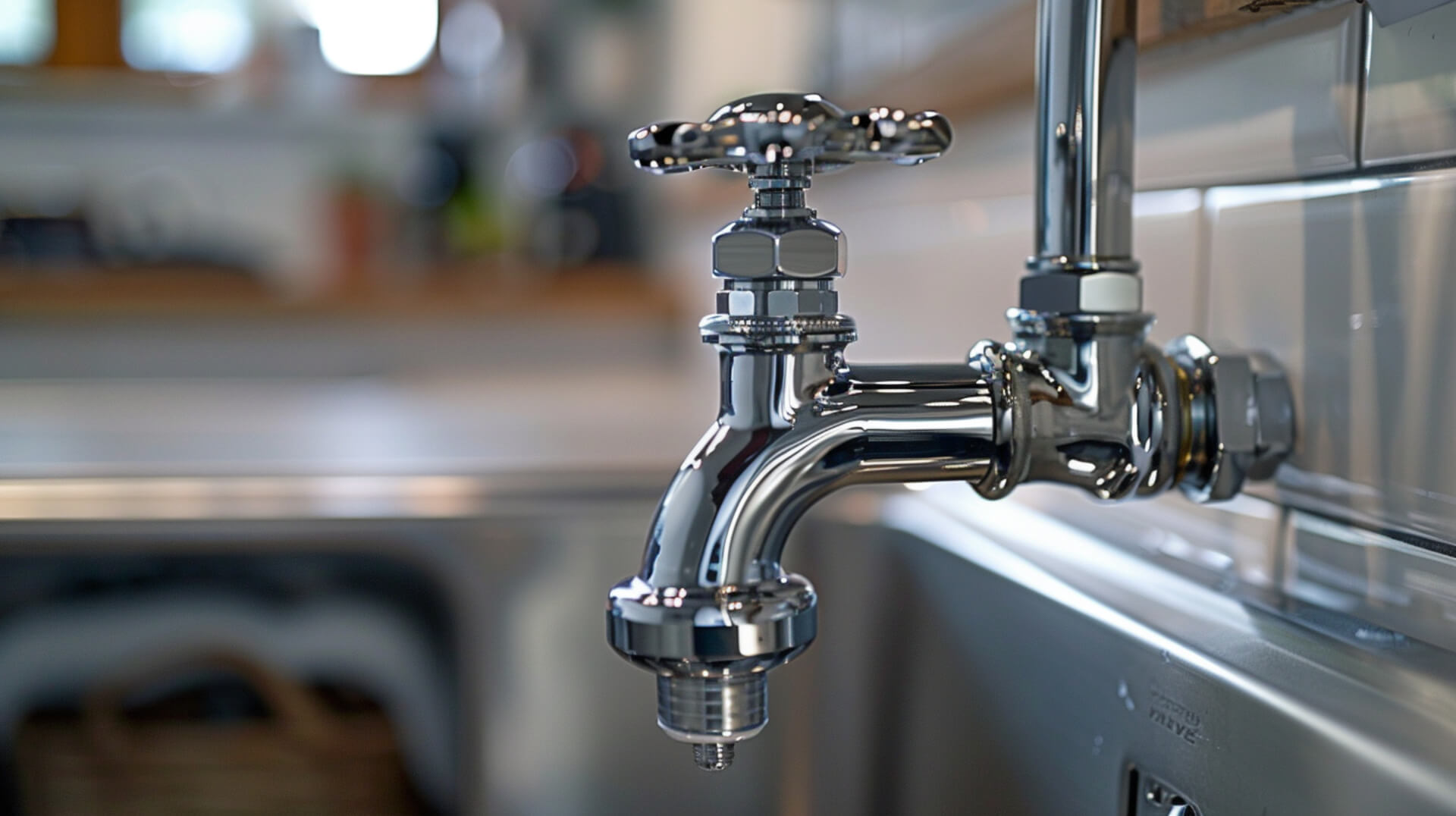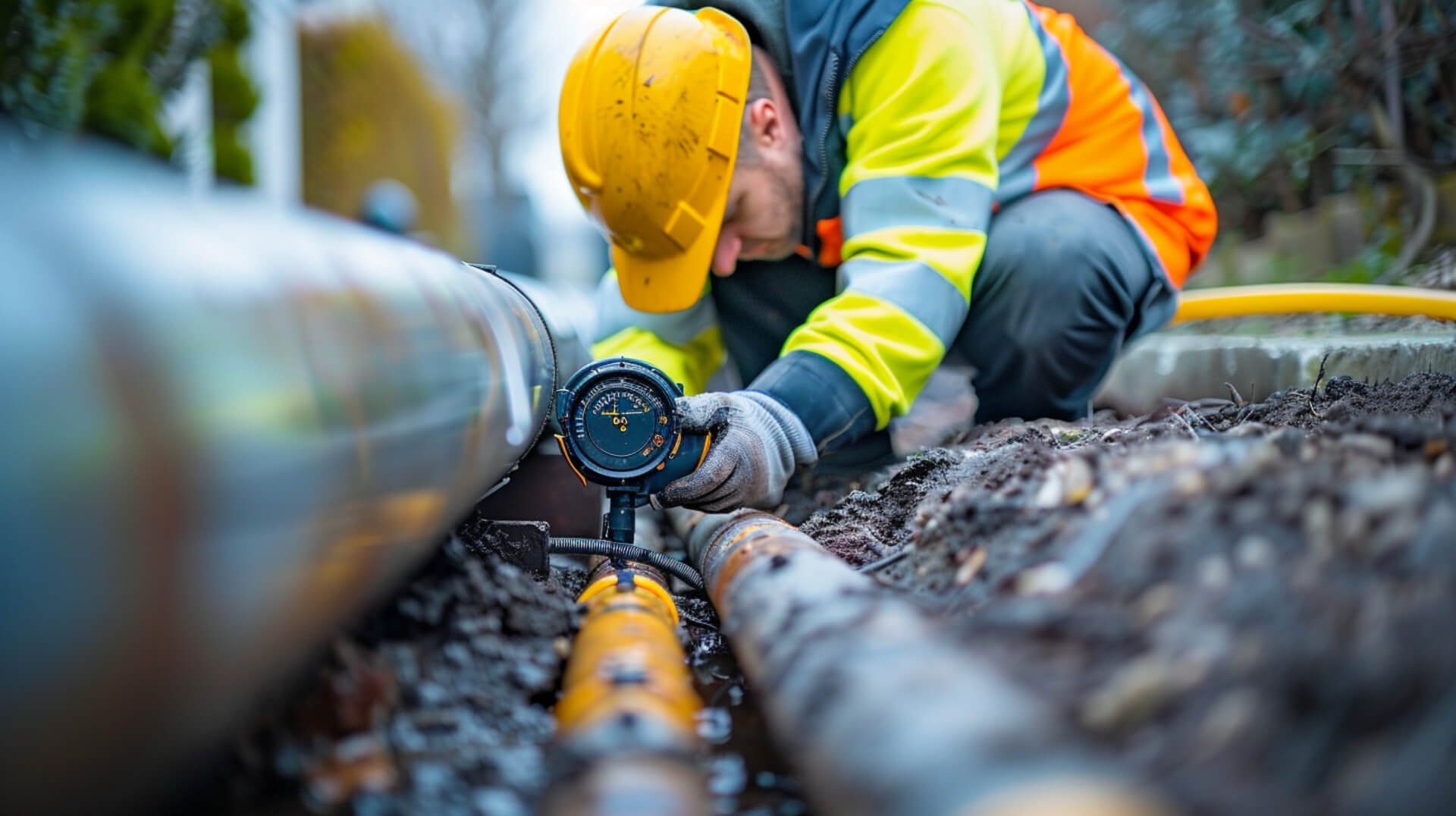 What Are The Different Types Of Drainage Systems That Can Be Installed
What Are The Different Types Of Drainage Systems That Can Be Installed
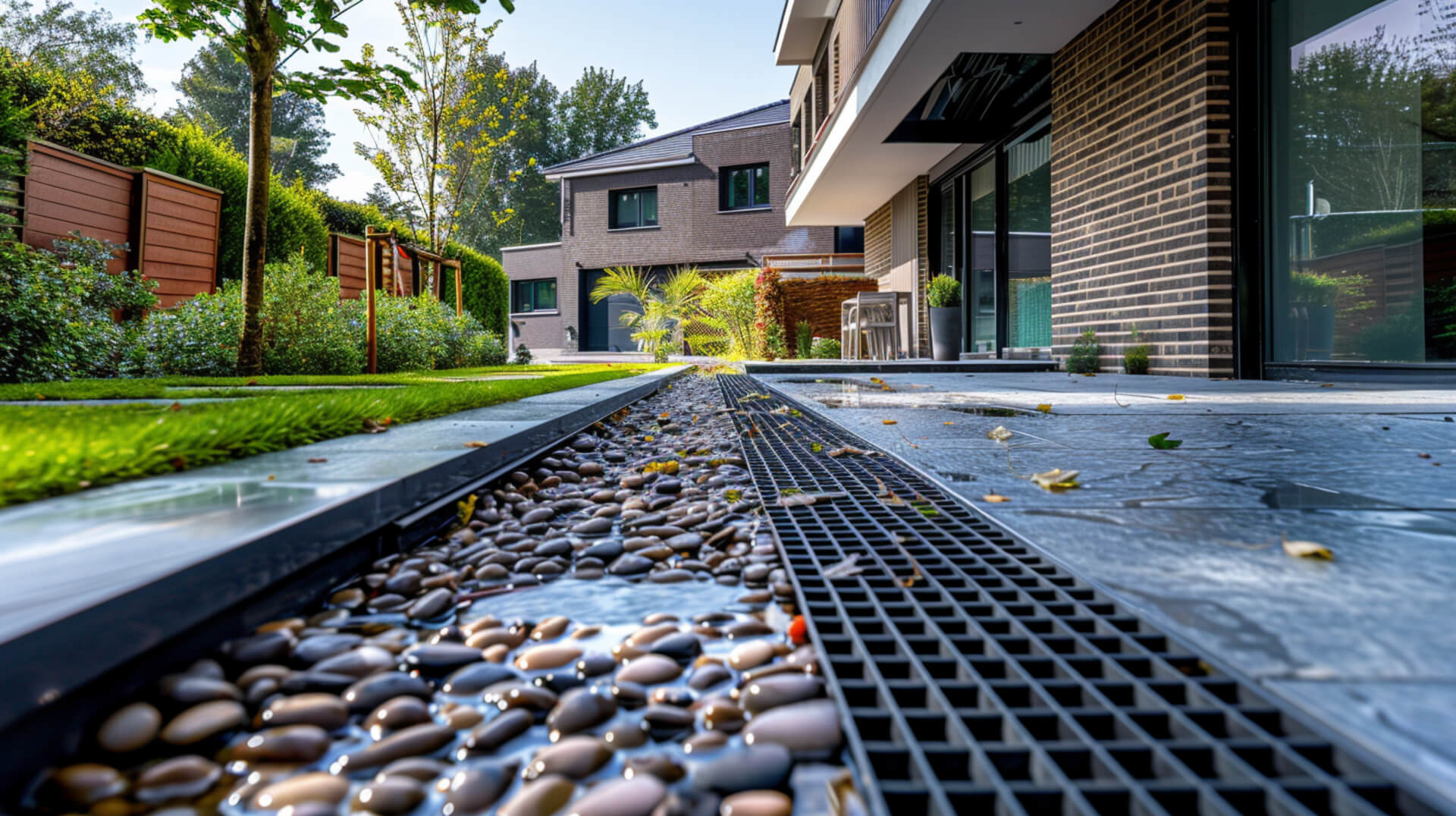
When considering the management of your property, understanding the fundamentals of drainage systems is paramount. These systems are designed to control water flow, ensuring that excess water is efficiently removed from your premises, thereby preventing potential damage.
Natural vs. Artificial Drainage Systems
Drainage solutions come in two primary forms: natural and artificial. Natural drainage relies on the Earth’s topography to direct water towards larger bodies such as rivers or oceans. In contrast, artificial drainage systems are engineered constructs designed to manage water in a more controlled manner. This includes handling rainwater, sewage, and even preventing gas seepage.
Contribution to Environmental Sustainability
Beyond their functional role in water management, drainage systems play a significant part in environmental sustainability. Properly designed and maintained systems can prevent soil erosion, reduce the risk of water pollution, and contribute to the conservation of local waterways.
Importance for Property Management
For property owners, business owners, and facility managers, investing in an efficient drainage system is not just a matter of protecting the property from water damage. It’s also about enhancing the property’s value and ensuring compliance with environmental regulations. Effective drainage systems are foundational to the safety and longevity of any property, making them an essential consideration in property management.
Comprehensive Overview of Drainage System Types
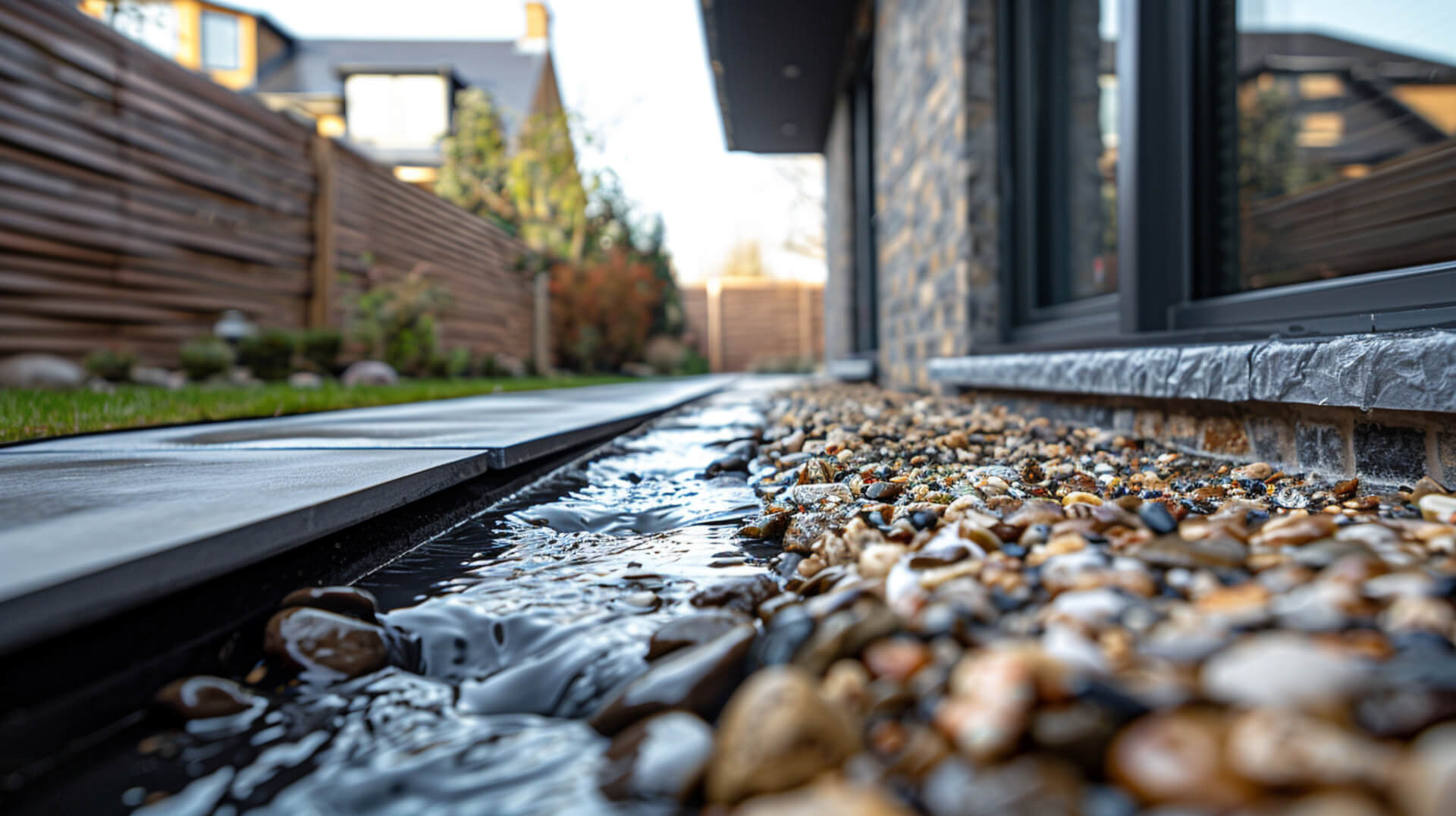
When considering the installation of a drainage system, it is essential to understand the various types available and their respective functions. This knowledge ensures that you select a system that aligns with your property’s specific water management needs.
Primary Categories of Drainage Systems
Drainage systems can be broadly categorised into surface and subsurface types, each with distinct operational methods and applications.
- Surface Drainage Systems: These systems, including shallow ditches and open drains, are designed to remove excess water from the ground surface. They are most effective in flat areas where water collects easily, such as agricultural fields or pathways.
- Subsurface Drainage Systems: Positioned beneath the soil layer, these systems target moisture at the root level, preventing waterlogging and root rot. They are particularly beneficial in areas with high water tables or heavy clay soils.
Specialised Drainage Solutions
For properties with specific topographical features, specialised drainage solutions are available:
- Slope Drainage Systems: Utilising gravity, these systems consist of inclined pipes that direct water away from sloped areas, preventing erosion and water accumulation.
- Downspouts and Gutters: Essential components of roof drainage, they channel water away from the building to protect the foundation from water damage.
Innovative Drainage Options
Innovative drainage options have been developed to address more complex water management challenges:
- French Drains: Comprising perforated pipes, French drains are buried in the ground to redirect subsurface water away from areas prone to saturation.
- Trench Drains: These are surface-level channels, often made from diverse materials, designed to intercept and redirect runoff water.
- Slot Drains: Offering a grateless design, slot drains provide a sleek and efficient method for water management across various applications.
Each drainage system type offers unique benefits and is suited for different environmental conditions and property layouts. Understanding these systems’ design and functionality is crucial for effective water management and the protection of your property.
Surface Drainage Systems: Design and Application
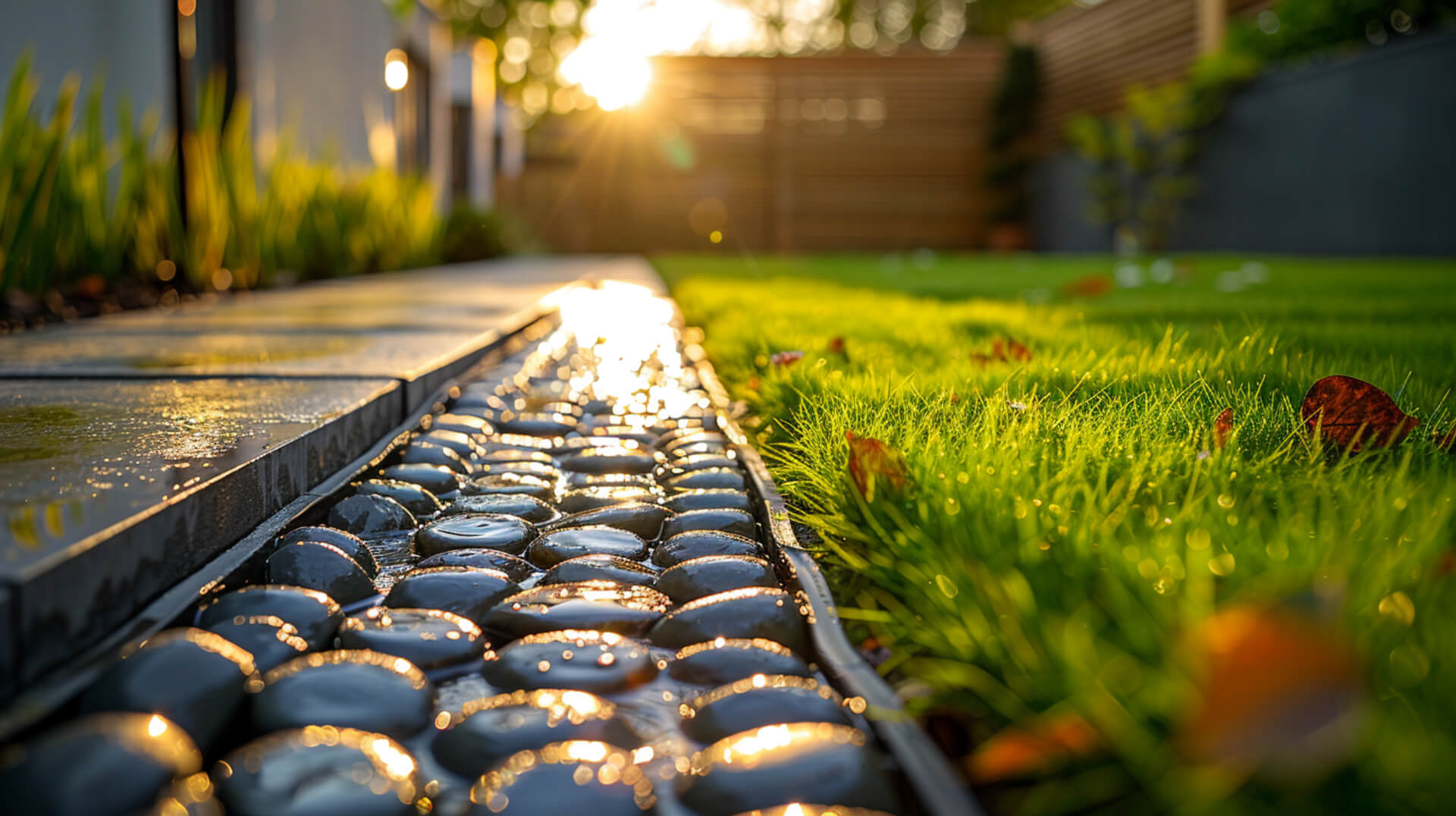
Surface drainage systems are integral to managing excess water in outdoor spaces. Understanding their design features and applications can help you determine if they are the right solution for your property’s water management needs.
Design Features of Surface Drainage Systems
Surface drainage systems typically consist of shallow ditches or open drains that collect and redirect water. Key design features include:
- Gradients: Gentle slopes guide water towards designated drainage areas.
- Channels: Defined paths prevent water from spreading and causing damage.
- Outlets: Points where water exits the system, often leading to larger bodies of water or storm sewers.
Beneficial Scenarios for Surface Drainage
Shallow ditches and open drains are particularly beneficial in:
- Flat Terrains: Where water tends to pool and does not naturally flow away.
- Agricultural Land: To prevent crop damage and soil erosion.
- Pathways and Pavements: To avoid water accumulation that can lead to slips and falls.
Integrating Surface Drainage into Landscapes
To incorporate surface drainage into existing landscapes:
- Plan: Identify areas prone to waterlogging and design the system accordingly.
- Integrate: Use landscaping elements like rocks or plants to disguise drainage features.
- Adapt: Modify the system as the landscape changes or as new construction occurs.
Maintenance Considerations
For the longevity of surface drainage systems, regular maintenance is essential:
- Inspection: Regularly check for blockages or signs of wear.
- Cleaning: Remove debris that could impede water flow.
- Repairs: Address any damage promptly to prevent system failure.
By understanding the design and application of surface drainage systems, you can effectively manage water on your property, ensuring its health and longevity.
Subsurface Drainage Systems: Beneath the Surface
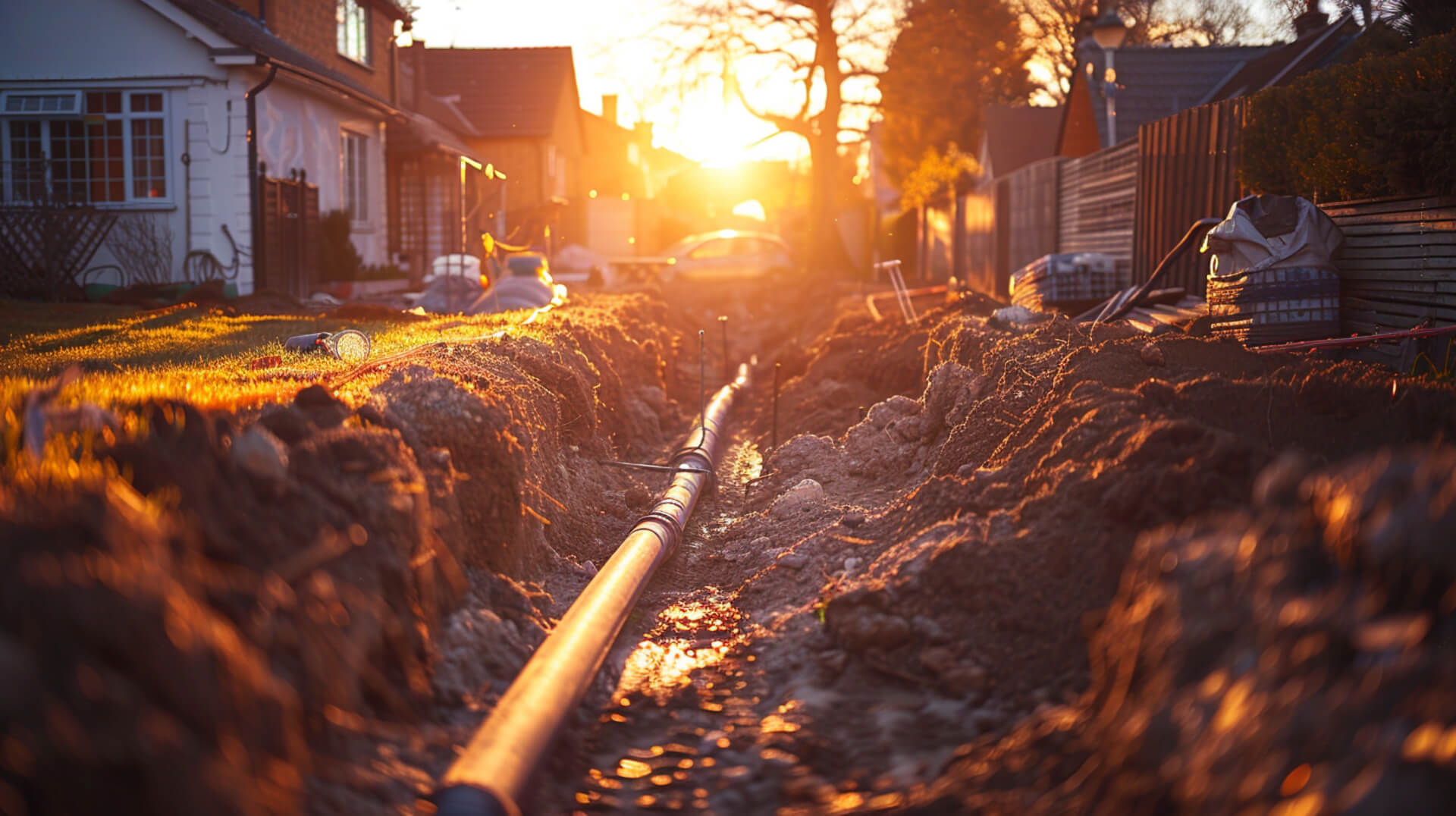
Subsurface drainage systems are designed to manage water at the root level, preventing water saturation that can lead to root rot and other issues detrimental to plant health and soil stability.
Functionality of Subsurface Drainage Systems
These systems function by:
- Collecting Excess Water: Pipes placed below the soil surface gather excess water.
- Redirecting Moisture: The collected water is then redirected away from critical areas to prevent waterlogging.
Installation Requirements
To ensure effective operation, subsurface drainage systems require:
- Proper Placement: Pipes must be installed at the correct depth and gradient.
- Adequate Materials: Use of durable materials like PVC or corrugated plastic that resist soil pressure and environmental wear.
Influence of Soil Type
The performance of subsurface drainage systems is significantly influenced by soil type:
- Permeability: Soils with high permeability may require less intensive drainage solutions.
- Texture: Clay-heavy soils may necessitate more robust systems due to slower water infiltration.
Long-Term Benefits and Maintenance
The long-term benefits of subsurface drainage include:
- Improved Soil Health: Reduces the risk of waterborne plant diseases.
- Enhanced Land Use: Makes previously waterlogged land usable.
Maintenance needs involve:
- Regular Inspections: Checking for pipe blockages or damage.
- Cleanouts: Ensuring the system remains free of debris to maintain functionality.
By understanding these aspects of subsurface drainage systems, you can make informed decisions to protect your property from water damage and maintain soil integrity.
Innovations in Drainage: Exploring French, Trench, and Slot Drains
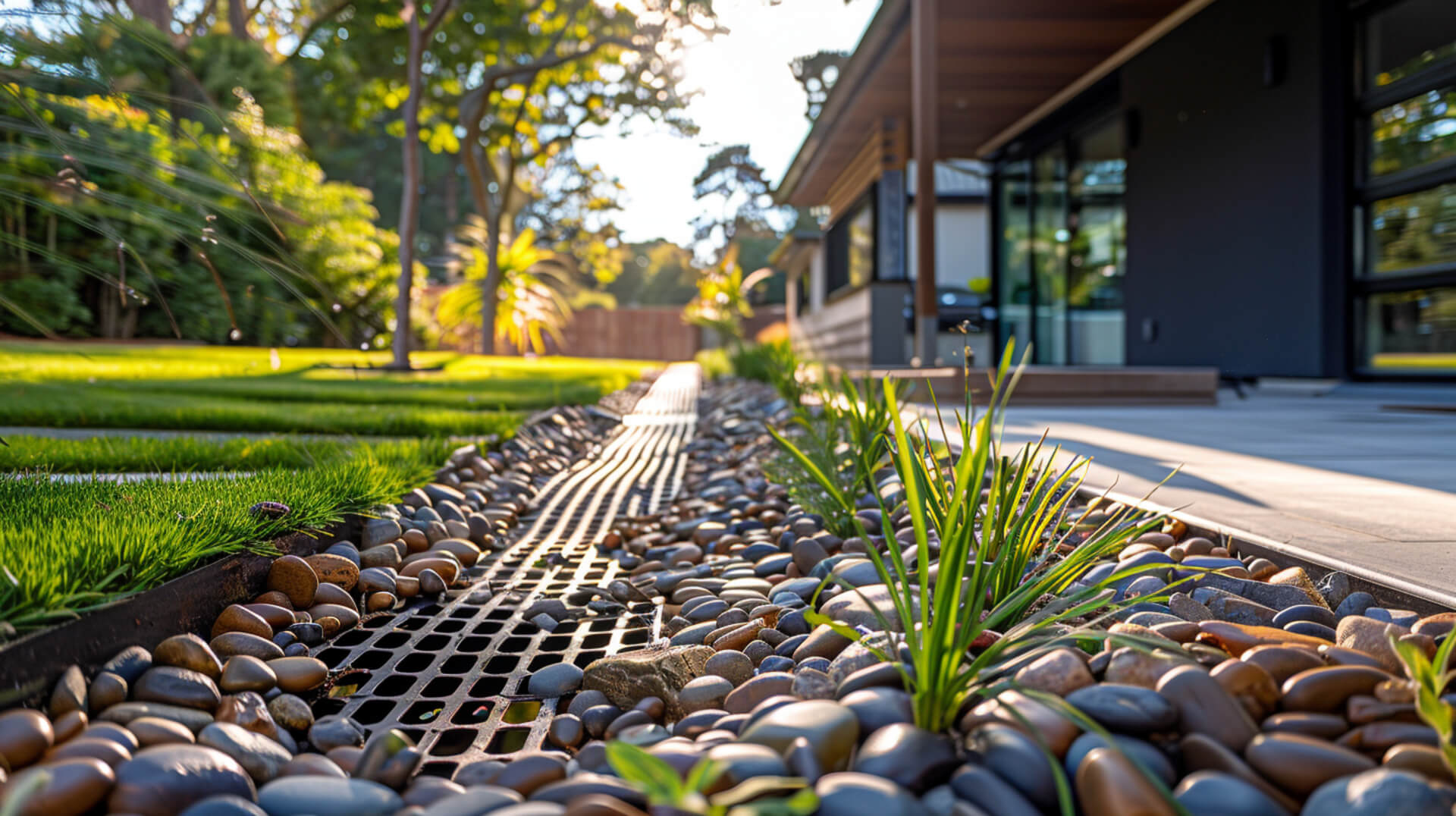
The evolution of drainage technology has led to the development of specialised systems designed to address specific water management challenges. Among these are French, trench, and slot drains, each offering unique advantages for different drainage needs.
Functionality of French Drains
French drains are a subsurface drainage solution that effectively redirects water away from areas prone to saturation. They work by:
- Perforated Piping: Water enters through holes in a buried pipe, preventing excess moisture from damaging foundations or landscapes.
- Gravel Layer: Surrounding gravel facilitates water flow into the pipe, acting as a philtre to prevent soil clogging.
Advantages of Trench Drains
Trench drains are ideal for intercepting surface water, particularly in urban or paved areas. Their benefits include:
- Surface-Level Installation: Allows for efficient capture of runoff water.
- Diverse Material Construction: Can be tailored to match the aesthetic and functional requirements of the installation site.
Design of Slot Drains
Slot drains offer a modern, grateless alternative for water management, suitable for a variety of applications:
- Grateless System: Reduces maintenance needs and presents a visually unobtrusive profile.
- Pre-Sloped Channel: Ensures efficient water flow and drainage, even in flat areas.
Selecting the Right Drainage Solution
When choosing between these drainage options, consider:
- Water Management Needs: Volume and type of water to be managed.
- Installation Site: Compatibility with existing structures and landscapes.
- Maintenance Requirements: Accessibility and frequency of maintenance tasks.
By understanding the operational principles and benefits of these innovative drainage systems, you can select the most appropriate solution to ensure effective water management on your property.
The Role of Downspouts and Gutters in Home Drainage Systems
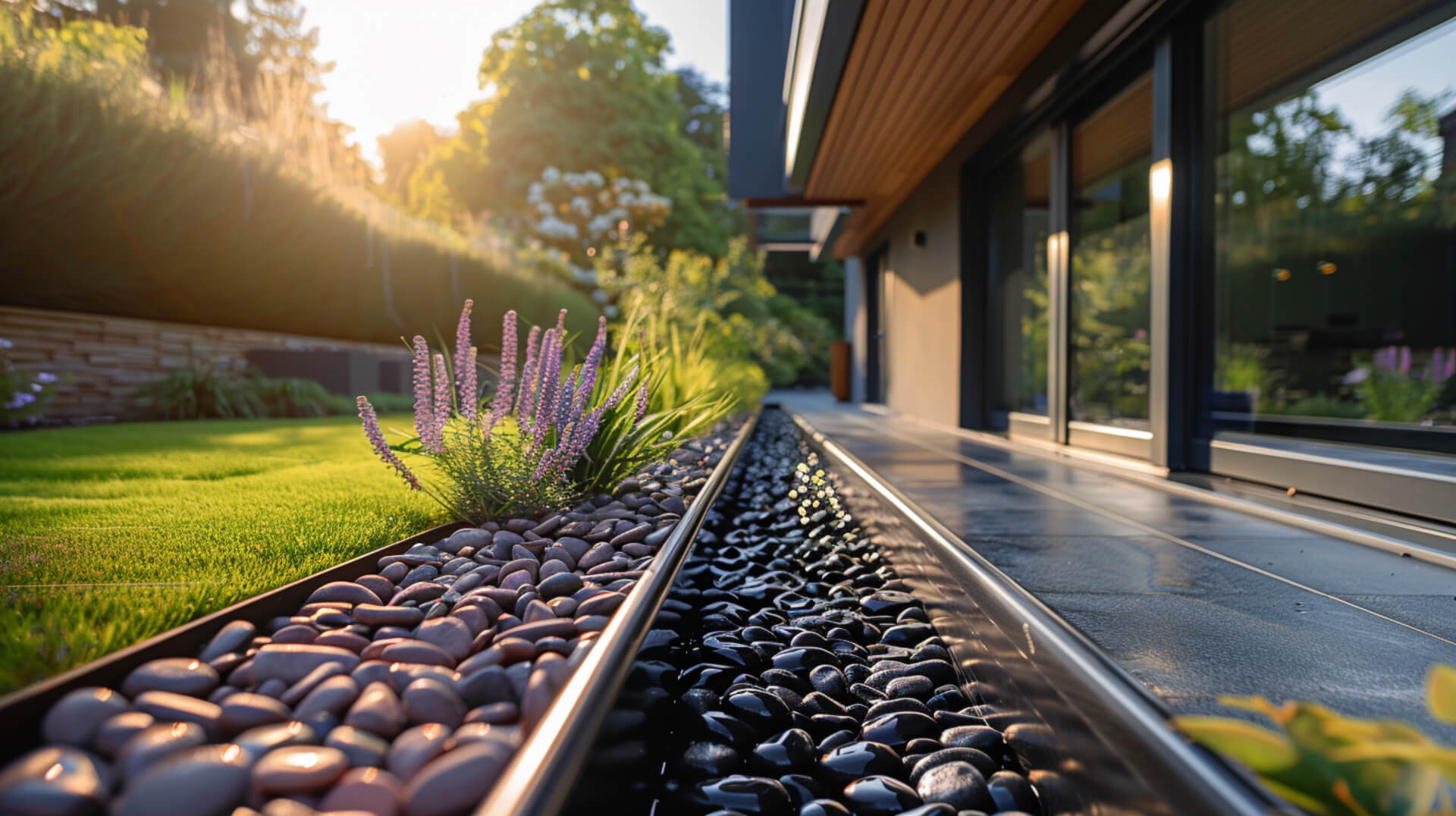
Downspouts and gutters are critical components of home drainage systems, designed to direct rainwater away from the structure to protect the foundation and prevent water damage.
Key Design Considerations for Downspouts and Gutters
Effective integration of downspouts and gutters into your home’s drainage system involves:
- Proper Sizing: Ensuring gutters and downspouts are sized to handle the volume of water expected for your region’s rainfall intensity.
- Strategic Placement: Positioning downspouts to direct water away from the foundation and prevent pooling.
- Slope: Installing gutters with the correct slope to ensure water flows towards downspouts without stagnating.
Ensuring Optimal Performance
To maintain the optimal performance of downspouts and gutters:
- Regular Cleaning: Remove leaves and debris that can cause blockages.
- Inspections: Check for signs of wear or damage, particularly after severe weather.
- Repairs: Address any issues promptly to prevent water from bypassing the system.
Addressing Common Issues
Common issues with downspouts and gutters include:
- Clogs: Caused by debris accumulation, necessitating cleaning or the installation of gutter guards.
- Leaks: Often due to joint or seam failure, requiring sealing or replacement.
- Misalignment: Can lead to improper water flow, corrected by adjusting the gutter slope or hanger placement.
By understanding and addressing these aspects, property owners can ensure their downspouts and gutters function effectively as part of their overall home drainage strategy.
Environmental Considerations in Drainage System Selection
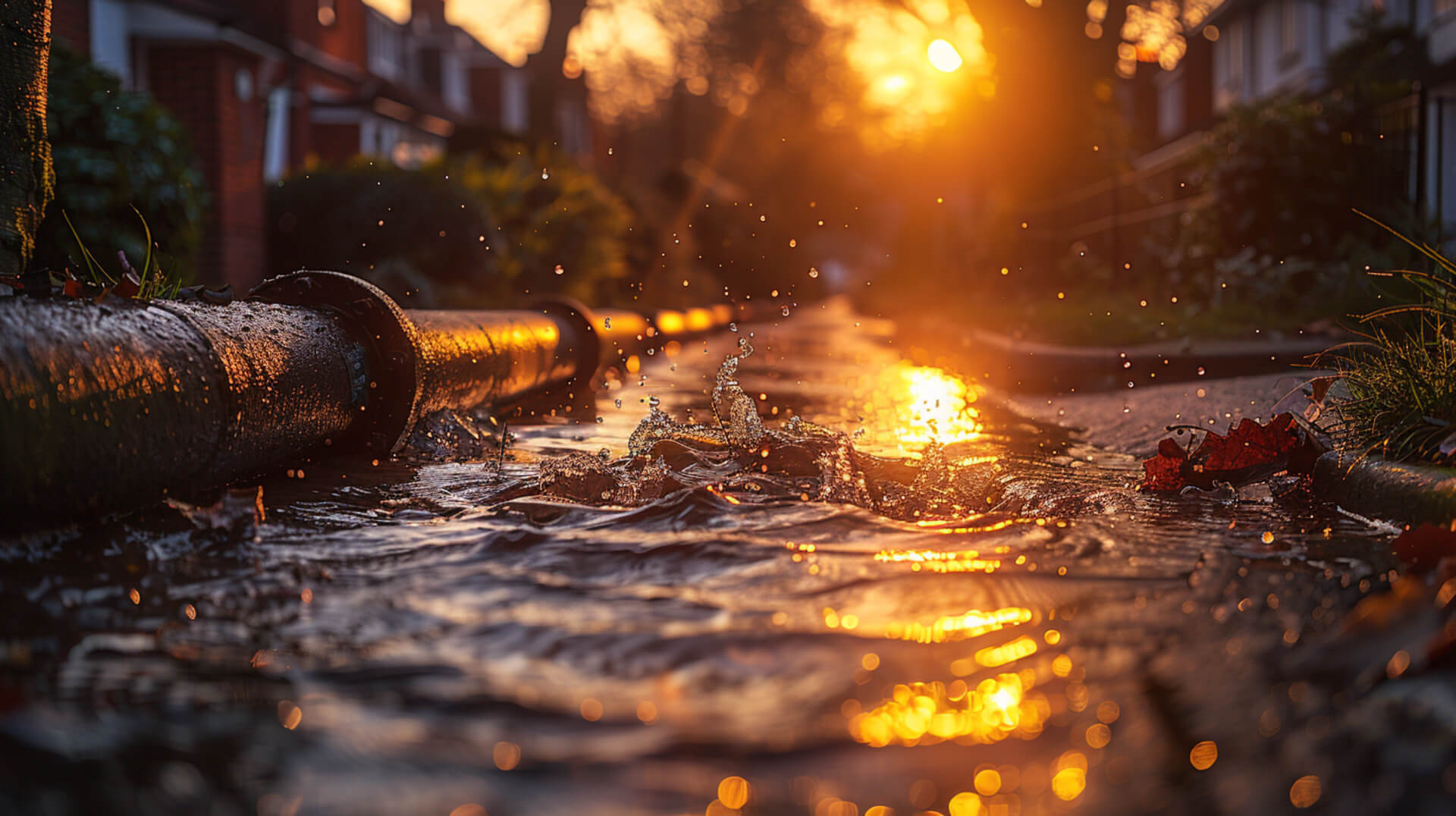
Selecting a drainage system is not only a matter of property protection but also of environmental stewardship. The impact on local ecosystems and water quality is a significant concern that requires careful consideration.
Impact on Local Ecosystems and Water Quality
Drainage systems directly affect the surrounding environment by:
- Altering Natural Water Flow: This can impact local habitats and biodiversity.
- Contaminant Transport: Systems can carry pollutants into water bodies if not properly managed.
Sustainable Drainage Solutions
To mitigate environmental impact, sustainable drainage solutions (SuDS) are recommended:
- Soakaways: These allow water to percolate into the ground, replenishing groundwater.
- Rain Gardens: These not only manage runoff but also provide habitat for wildlife.
- Permeable Paving: Reduces runoff by allowing water to seep through surfaces.
Balancing Drainage Needs with Environmental Responsibility
Property owners can balance their drainage needs with environmental responsibility by:
- Consulting Experts: Professionals can advise on the most eco-friendly options.
- Regular Maintenance: Ensuring systems are functioning correctly to prevent pollution.
Regulatory and Compliance Issues
When installing drainage systems, compliance with regulations is mandatory:
- Local Regulations: These may dictate the type of system you can instal.
- Environmental Laws: Ensuring systems do not harm protected areas or species.
By considering these environmental and regulatory factors, you can choose a drainage system that meets your needs while also protecting the natural world.
Maintenance and Efficiency: Keeping Your Drainage System at Peak Performance

Maintaining your drainage system is crucial for ensuring its efficiency and longevity. Regular upkeep not only prevents potential problems but also extends the system’s lifespan, saving you from costly repairs or replacements.
Essential Routine Maintenance Tasks
To keep your drainage system functioning effectively, routine maintenance tasks include:
- Inspecting: Regularly check for signs of blockage or damage.
- Cleaning: Clear away debris from gutters, drains, and grates.
- Flushing: Run water through the system to ensure clear pathways.
Identifying and Addressing Common Issues
Property owners should be vigilant for common drainage issues such as:
- Blockages: Caused by leaves, sediment, or other debris.
- Cracks or Breaks: In pipes that may lead to leaks or water damage.
- Poor Water Flow: Indicating potential slope or clog issues.
The Role of Professional Inspections
Professional inspections are vital for:
- Expert Assessment: Identifying issues that may not be immediately apparent.
- Advanced Solutions: Recommending repairs or upgrades based on the latest industry standards.
Benefits of Preventative Maintenance Strategies
Preventative maintenance strategies are beneficial as they:
- Reduce Emergency Repairs: By addressing issues before they escalate.
- Extend System Life: Through consistent care and early problem detection.
By adhering to these maintenance practices, you can ensure that your drainage system remains in optimal condition, safeguarding your property against water-related issues.
Professional Installation vs. DIY: Making the Right Choice

When it comes to installing a drainage system, property owners must weigh the decision between a do-it-yourself approach and hiring professionals. This choice hinges on several factors, each impacting the project’s success and the system’s long-term reliability.
Factors Influencing Drainage System Installation Decisions
Before embarking on a drainage project, consider the following:
- Complexity of the Project: More intricate systems like subsurface or slope drainage may require specialised knowledge and tools.
- Scale of the Installation: Large-scale projects often benefit from the efficiency and expertise of a professional team.
- Personal Expertise: Assess your own skills and experience with similar home improvement tasks.
Resources for DIY Drainage Installation
For those considering a DIY approach, resources include:
- Instructional Guides: Many online tutorials and manuals are available.
- Home Improvement Workshops: Local hardware stores often offer classes.
- Community Forums: Online communities can provide advice and support.
Selecting Qualified Professionals
To ensure a professional installation, property owners should:
- Check Credentials: Verify licences, certifications, and insurance.
- Read Reviews: Look for feedback from previous customers.
- Get Multiple Quotes: Compare costs and services from several contractors.
By carefully considering these factors, you can make an informed decision that ensures the effectiveness and durability of your property’s drainage system.
Cost Considerations: Budgeting for Your Drainage System Project
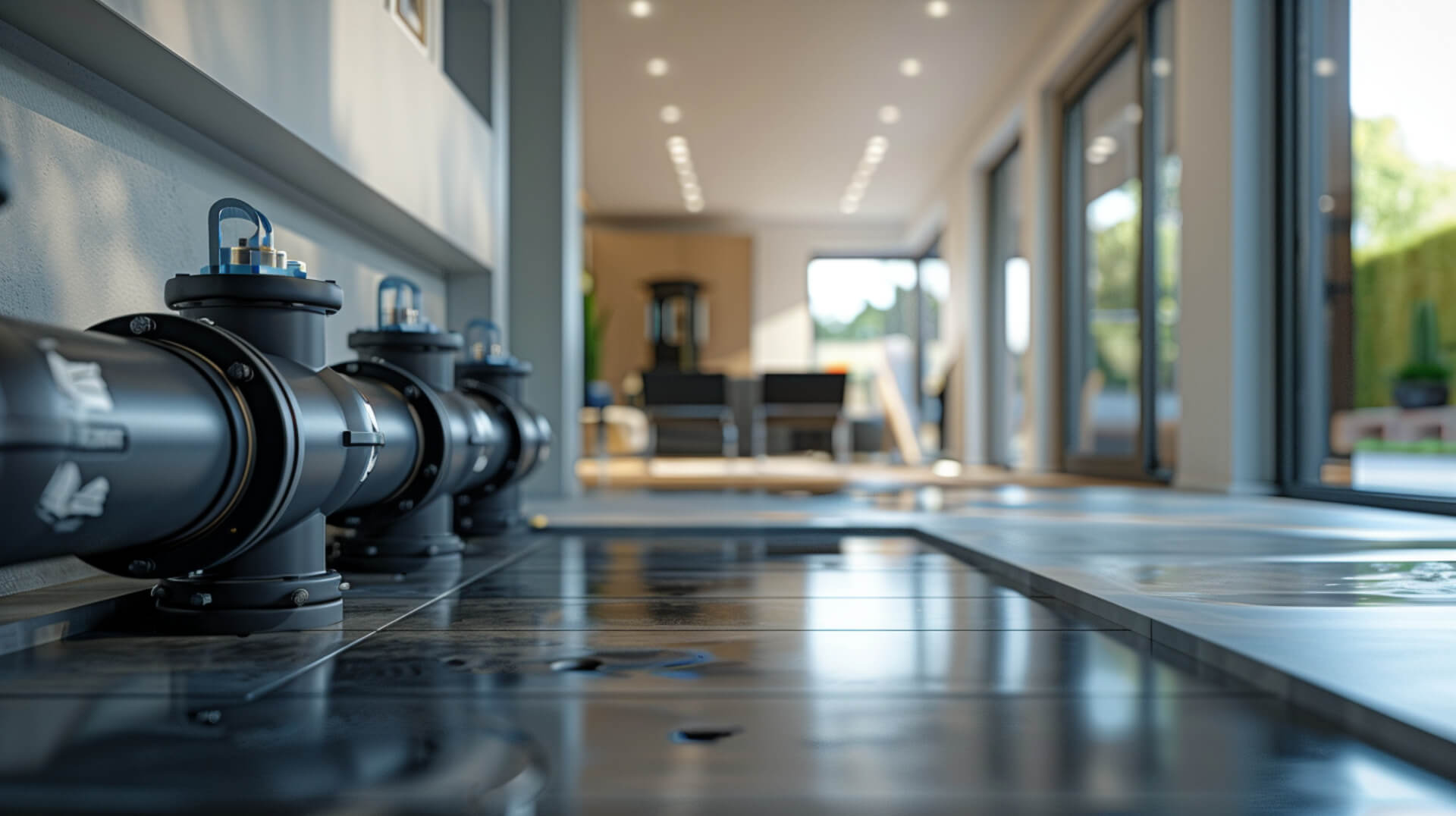
Understanding the financial aspects of drainage system installation is crucial for property owners. The costs can vary widely based on several factors, and planning your budget accordingly is essential for a successful project.
Primary Cost Drivers for Drainage Installations
The cost of installing a drainage system is influenced by:
- System Type: Different systems, from simple surface drains to complex subsurface networks, come with varying price tags.
- Property Size: Larger areas require more materials and labour, increasing the overall cost.
- Material Quality: Higher quality materials typically cost more but offer greater durability.
- Labour: Professional installation can add to the expense but ensures the system is correctly implemented.
Budgeting for Drainage Projects
To effectively budget for a drainage system:
- Assess Needs: Determine the most appropriate system for your property’s requirements.
- Get Estimates: Obtain quotes from multiple contractors to compare costs.
- Plan for Extras: Include a contingency for unexpected issues or additional work.
Financing Options
For large-scale installations, financing options may include:
- Loans: Personal or home improvement loans can provide the necessary funds.
- Payment Plans: Some contractors offer payment plans to spread out the cost.
Long-Term Financial Considerations
When evaluating the cost, consider long-term factors:
- Maintenance: Investing in a system with lower maintenance costs can save money over time.
- Efficiency: A more efficient system can prevent costly property damage, offering savings in the long run.
By carefully considering these cost factors, you can budget effectively for your drainage system installation and ensure financial preparedness for the project.
Navigating Legal and Regulatory Requirements
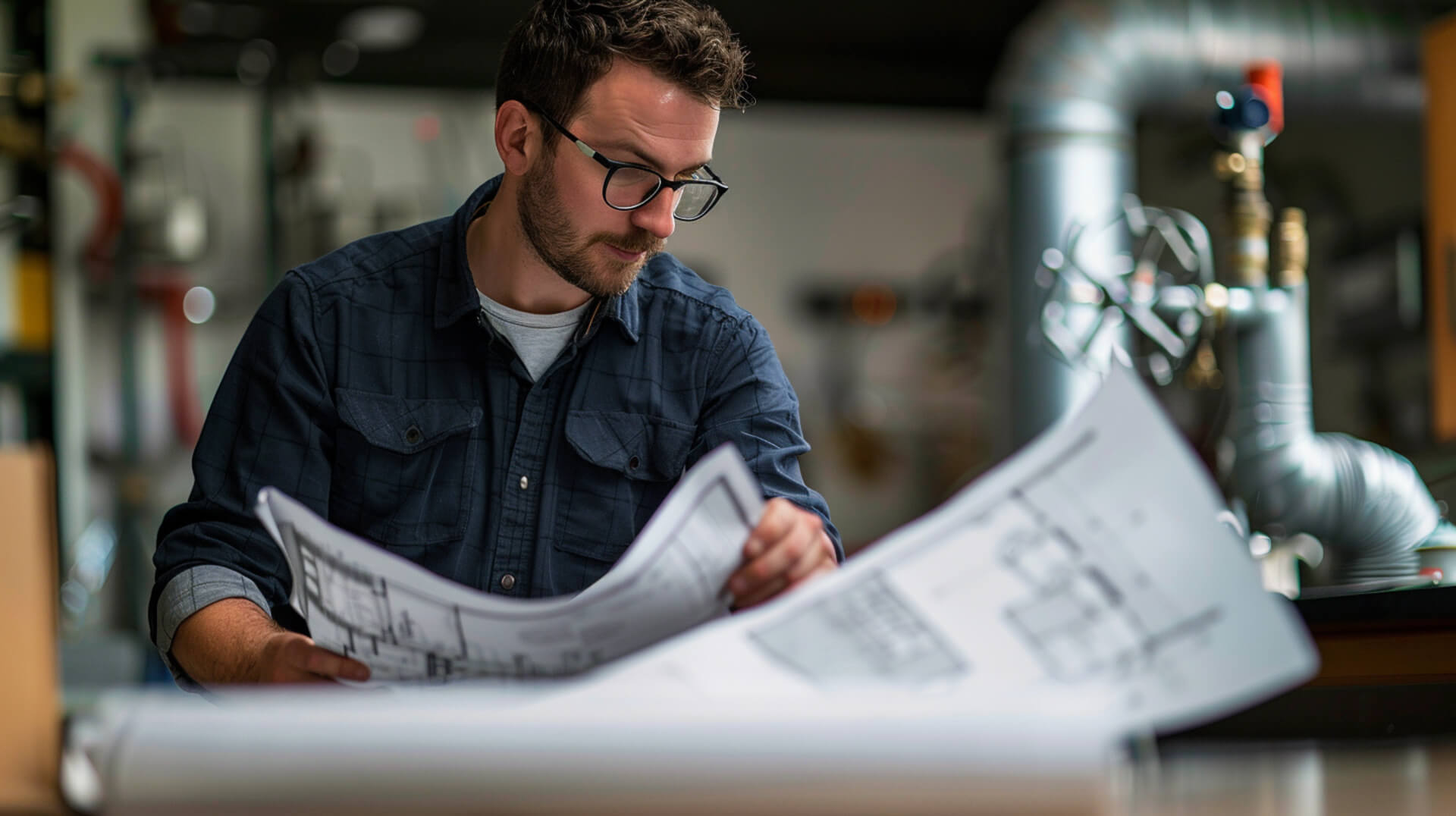
Compliance with legal and regulatory standards is a critical aspect of drainage system installation and maintenance. Property owners must be aware of the requirements to avoid penalties and ensure the safety and efficacy of their drainage solutions.
Understanding Compliance for Drainage Systems
To ensure compliance with local, state, and federal regulations, property owners should:
- Research Local Codes: Different areas have specific requirements for drainage system design and installation.
- Obtain Necessary Permits: Most jurisdictions require permits before construction can begin.
- Follow Best Practices: Adhering to industry standards helps ensure compliance and system effectiveness.
Consequences of Non-Compliance
Failing to comply with regulations can lead to:
- Fines: Monetary penalties for violating codes.
- Legal Action: Potential lawsuits or enforcement actions.
- System Redesign: The need to modify or replace non-compliant systems.
Permitting Process Variations
The permitting process can vary based on:
- System Type: Different systems may have unique requirements.
- Jurisdiction: Local governments have their own procedures and standards.
By staying informed about the legal and regulatory aspects of drainage system installation and maintenance, property owners can ensure their projects proceed without legal complications and contribute to the overall well-being of their community’s water management infrastructure.
Ensuring Effective Water Management Through Proper Drainage
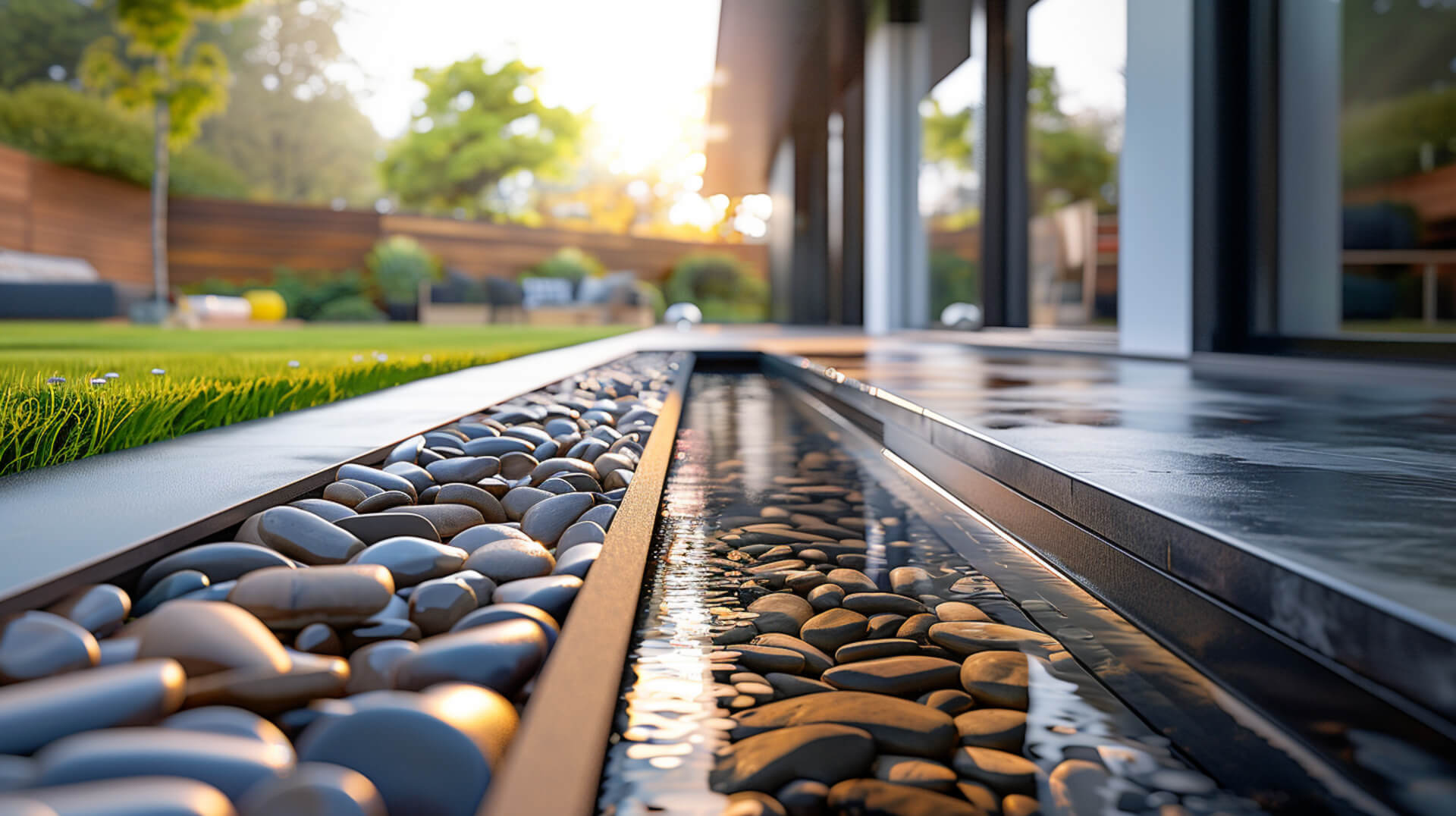
Effective water management is a multifaceted challenge that requires a comprehensive approach. The various types of drainage systems available play a pivotal role in addressing this challenge, each contributing to a holistic strategy for managing water on your property.
Key Considerations for Drainage System Selection
When selecting a drainage system, property owners should consider:
- System Suitability: Assessing the compatibility of the drainage system with the specific environmental conditions and topography of the property.
- Maintenance Requirements: Understanding the maintenance needs of the system to ensure its long-term functionality and efficiency.
- Regulatory Compliance: Ensuring that the chosen system adheres to local building codes and environmental regulations.
Enhancing Drainage System Effectiveness
Ongoing education and professional consultation can significantly enhance the effectiveness of a drainage system by:
- Staying Informed: Keeping abreast of the latest developments in drainage technology and best practices.
- Seeking Expertise: Consulting with professionals for system design, installation, and maintenance.
Future Trends in Drainage Technology
Property managers should be aware of emerging trends in drainage technology, such as:
- Smart Drainage Solutions: Systems equipped with sensors and IoT technology for real-time monitoring and management.
- Eco-Friendly Designs: Innovations that minimise environmental impact while maximising water conservation.
By considering these factors and staying informed about advancements in the field, property owners can ensure that their drainage systems are not only effective today but also adaptable to the needs of tomorrow.

